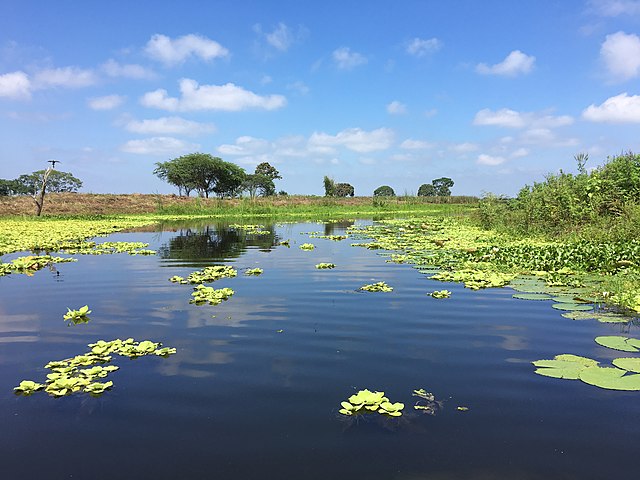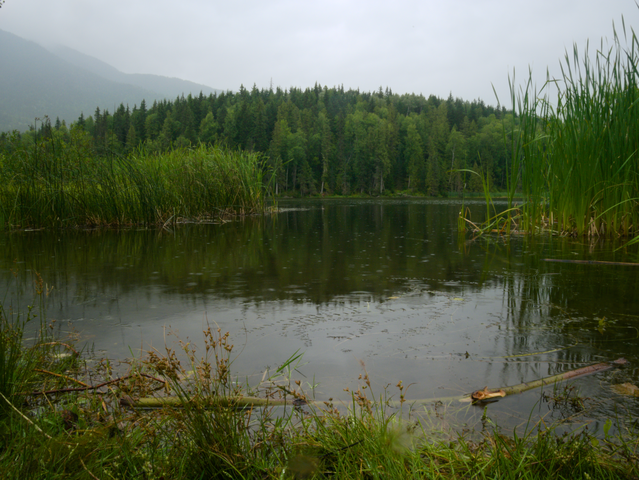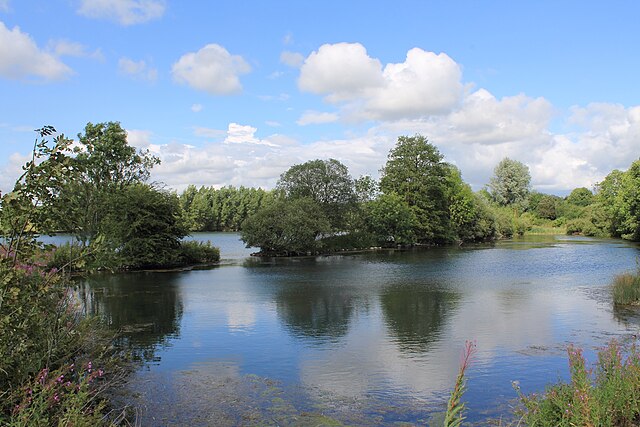
Thammasat University students interested in climate change, geology, earth science, sustainability studies, sociology, ecology, and related subjects may find it useful to participate in a free 25 November Zoom talk on Why are wet soils in wetlands so different?
The event, on Thursday, 25 November 2022 at 2pm Bangkok time, is presented by the Faculty of Veterinary and Agricultural Sciences, University of Melbourne, Australia.
The TU Library collection includes many books on different aspects of wetlands.
The speaker will be Associate Professor Vanessa Wong, a soil scientist at the School of Earth, Atmosphere, and Environment at Monash University, Australia.
As the event webpage explains,
Wetlands are important ecosystems, hosting critical habitats and diverse species. The soils which support these ecosystems are highly dynamic environments, acting as sinks for carbon, and playing a critical role in the cycling of greenhouse gases, nutrients, and biogeochemical processes at the intersection of both terrestrial and aquatic ecosystems.
Coastal wetland soils experience rapid changes in water levels as a result of land management activities, variations in sea level, infrastructure development, and climate change and variability. These variations in water levels can then cause rapid changes in soil and water quality, such as increasing acidity and decreasing pH, rapid deoxygenation of waterways, and potential release of heavy metals.
Students are invited to register for the event at this link:
https://www.eventbrite.com.au/e/why-are-wet-soils-in-wetlands-so-different-tickets-445047548197

.As the website of the World Wide Fund For Nature notes,
Protecting Thailand’s wetland ecosystems
Wetlands and watershed systems provide a variety of vital ecosystem services, ranging from food, water filtration, and flood mitigation, in addition to serving as a unique habitat for many diverse species. Perhaps nowhere on Earth is the value of these ecosystems as readily apparent as it is in the Greater Mekong region, where 60 million people depend on the world’s largest inland fishery – in the lower Mekong river basin – for their sustenance and livelihoods.
While WWF-Greater Mekong is working in recognition of the vital importance of wetlands on a regional scale, WWF-Thailand and other country offices in the region are working to protect and promote the value of wetlands at the national and local levels.
Wetlands comprise 7.5% of Thailand’s land area. These remarkably productive and valuable ecosystems – along with their innumerous economic, social, and ecological benefits – are threatened by agricultural expansion and runoff, destructive fishing practices, pollution, and disturbances caused by major infrastructure development.
Through a project entitled “Building Community and Ecosystem Resilience to the impact of Climate Change in Chi River Basin” in the Chi Watershed, which drains into one of the largest sub-basins of the larger Mekong River Basin, WWF-Thailand has been teaming up with local communities to preserve the valuable services and critical wildlife habitats that the watershed ecosystem supplies.
Funding and support for this project comes from the Coca-Cola Foundation of Thailand’s RAKNAM (Love Water) project. The successful collaboration has allowed the project to benefit over 60,000 people and has helped Coca-Cola to conserve and manage the water resources in their bottling operations more sustainably.
Utilizing a participatory research methodology called Tai Baan research, WWF-Thailand’s field staff has carried out training and capacity building activities for 20 local communities in the Chi watershed area. After the participating communities have gone through the training and are equipped with the tools and skills to conduct research on their own, WWF-Thailand begins to act as an assistant researcher, providing support and guidance when necessary.
The Tai Baan research method not only provides the local communities with the tools and skills to inform themselves on the specific ways in which their actions impact their natural surroundings; it also incorporates an additional element of sustainability by providing the local participants with a sense of empowerment and ownership over the project. Having carried out much of the research themselves, and gained knowledge and skills in the process, the local participants are more likely to keep working on these issues to continue making their interactions with their natural surroundings more sustainable, even after the project ends.
Just as the local community stakeholders enhanced their own understanding and awareness of the specific ways in which their actions impact their natural surroundings, the WWF-Thailand project in the Chi Watershed also works with other stakeholder groups to similarly boost their knowledge on wetland ecosystem issues. Government and law enforcement officials were another group of stakeholders that WWF-Thailand engaged with in this project. Enforcement of environmental protection regulations was not possible before, due to a lack of understanding of ecosystem functions and the dynamics of the interaction between the local communities and their natural surroundings. After the project, law enforcement officials and policy makers had a better understanding of how the local communities utilized and protected their surrounding natural resources, and were thus better equipped to support and work cooperatively with the local communities to protect the Chi watershed ecosystem.
By engaging with diverse stakeholder groups, the project was able to achieve one of its primary objectives: enhancing ability of the participating communities to creatively and collaboratively work with other stakeholders to establish alternative, more environmentally friendly practices in the Chi watershed.

The Stockholm Environment Institute (SEI) website observes,
The Songkhram River in northeast Thailand is a tributary of the Mekong River. The Lower Songkhram Basin comprises the largest area of flooded forest in the northeast region of Thailand providing a key habitat for more than 180 species of fish with at least 58 species migrate between the basin and the Mekong River. Of these, seven fish species are listed in the IUCN Red List of Threatened and Endangered Species.
Every rainy season from July to August, the Mekong River floods into the Songkhram River, inundating the Songkhram Basin’s streams, lakes and creeks with sediment and fish. After the rains, the Songkhram River drains back into the Mekong River in September and October. This unique ebb and flow of flood waters between the two rivers has resulted in creating the Songkhram wetlands and seasonally flooded forests ecosystems rich in fish, animal and plant biodiversity. The Lower Songkhram Basin is called the “womb” of the Mekong Basin, similar to Tonle Sap Lake in Cambodia, and is now recognized under the Ramsar Convention as a wetlands of international importance.
Given the wetlands serve as feeding and breeding grounds for many local and migratory fish, the Lower Songkhram Basin is a rich source of fisheries for local communities in the region providing both protein and supporting local livelihoods. The lake ecosystems and flooded conditions are also suitable for rice cultivation. Rice farming and fisheries are an integral part of the culture of local communities.
In the last two decades, hydrological changes in the Mekong River, especially due to large-scale water resources development in the upstream such as hydropower and extreme climate events, has affected the water levels and flows of the Mekong River that bring water, sediments, fertilizer and nutrients to the Songkhram River and disrupt seasonal fish migration. At the same time, the size and quality of the wetland areas in the Lower Songkhram Basin also decrease due to changes in land use around the wetlands, increase in agriculture and encroaching urbanization. The people most affected by these changes are local fishers and farmers…

(All images courtesy of Wikimedia Commons)
